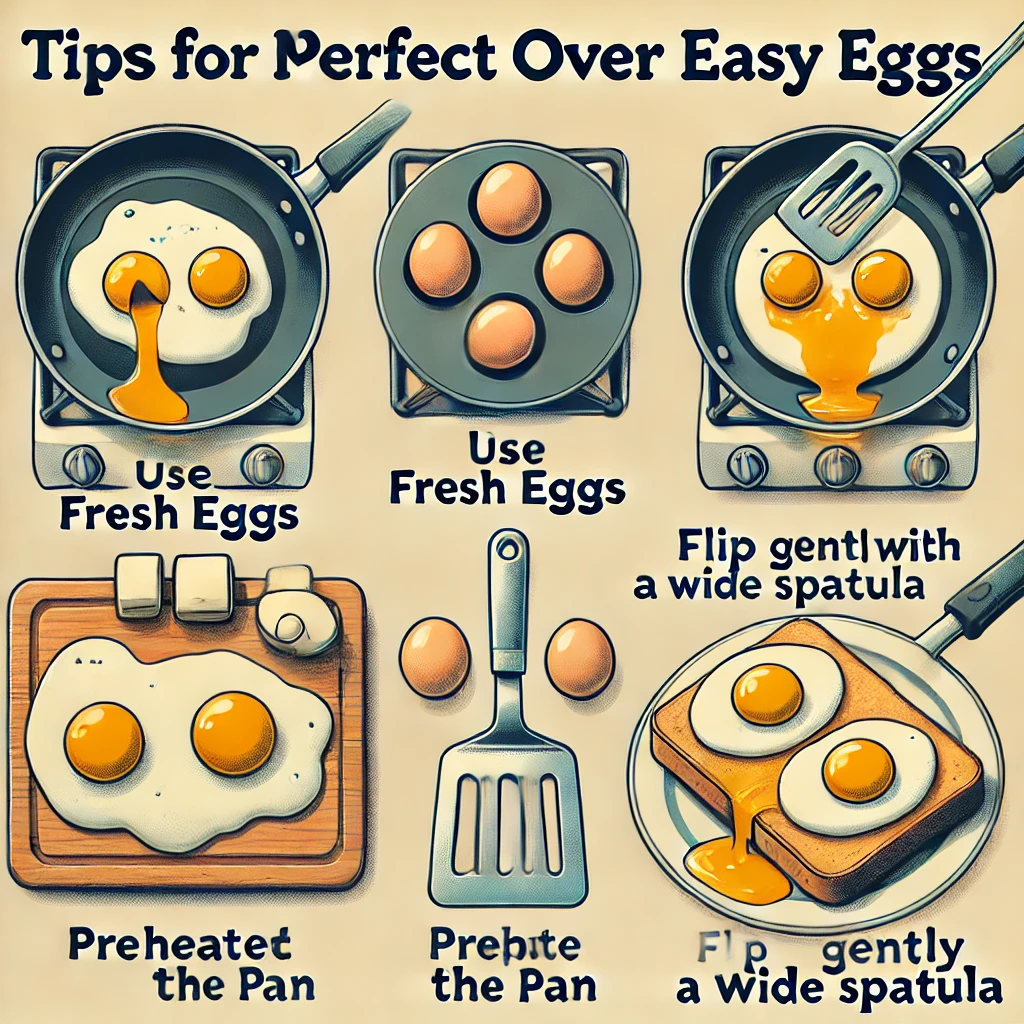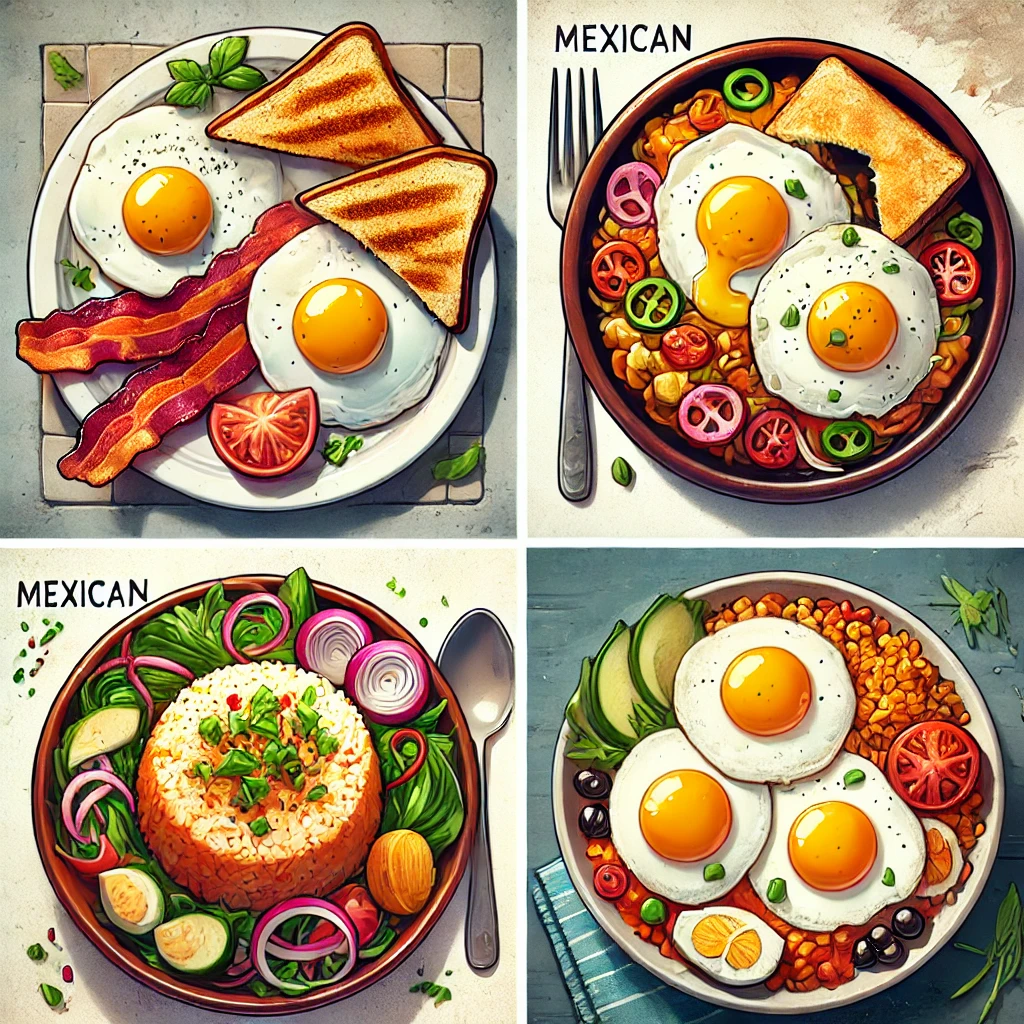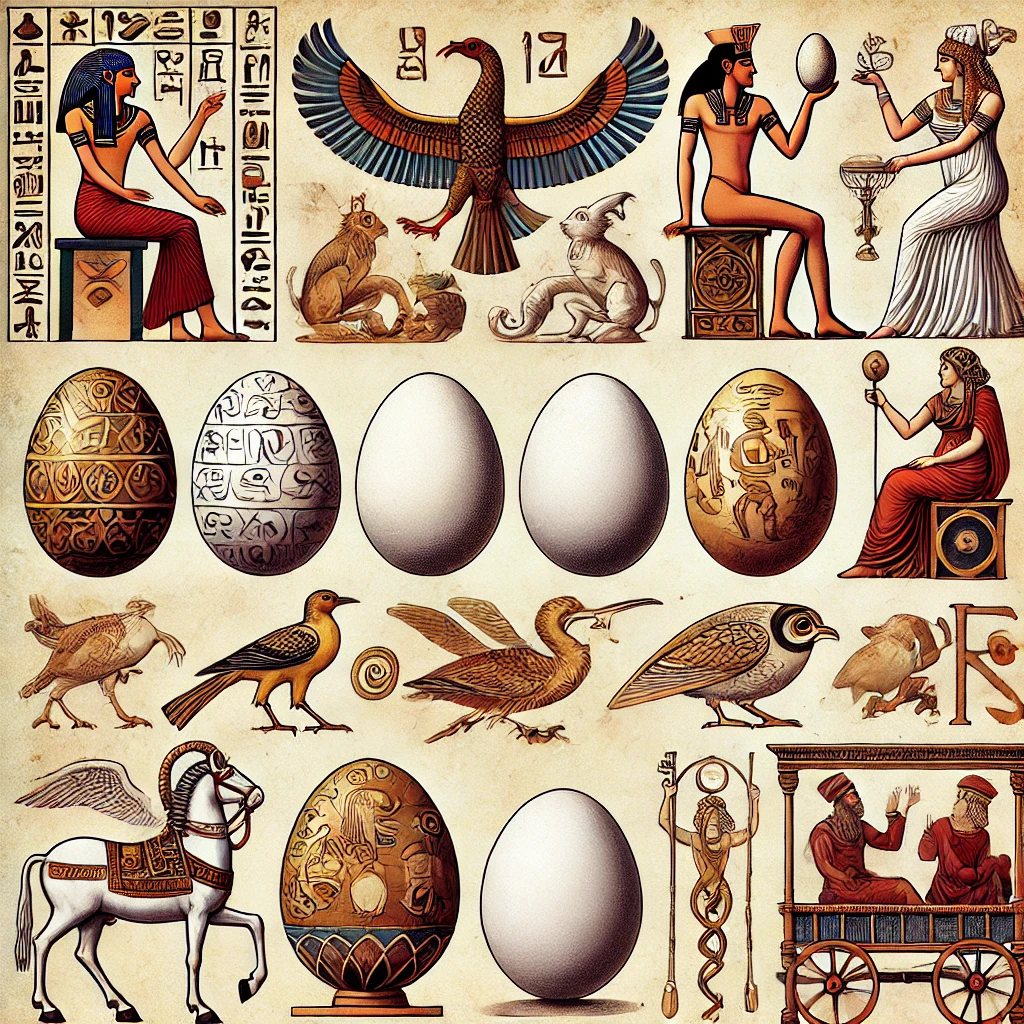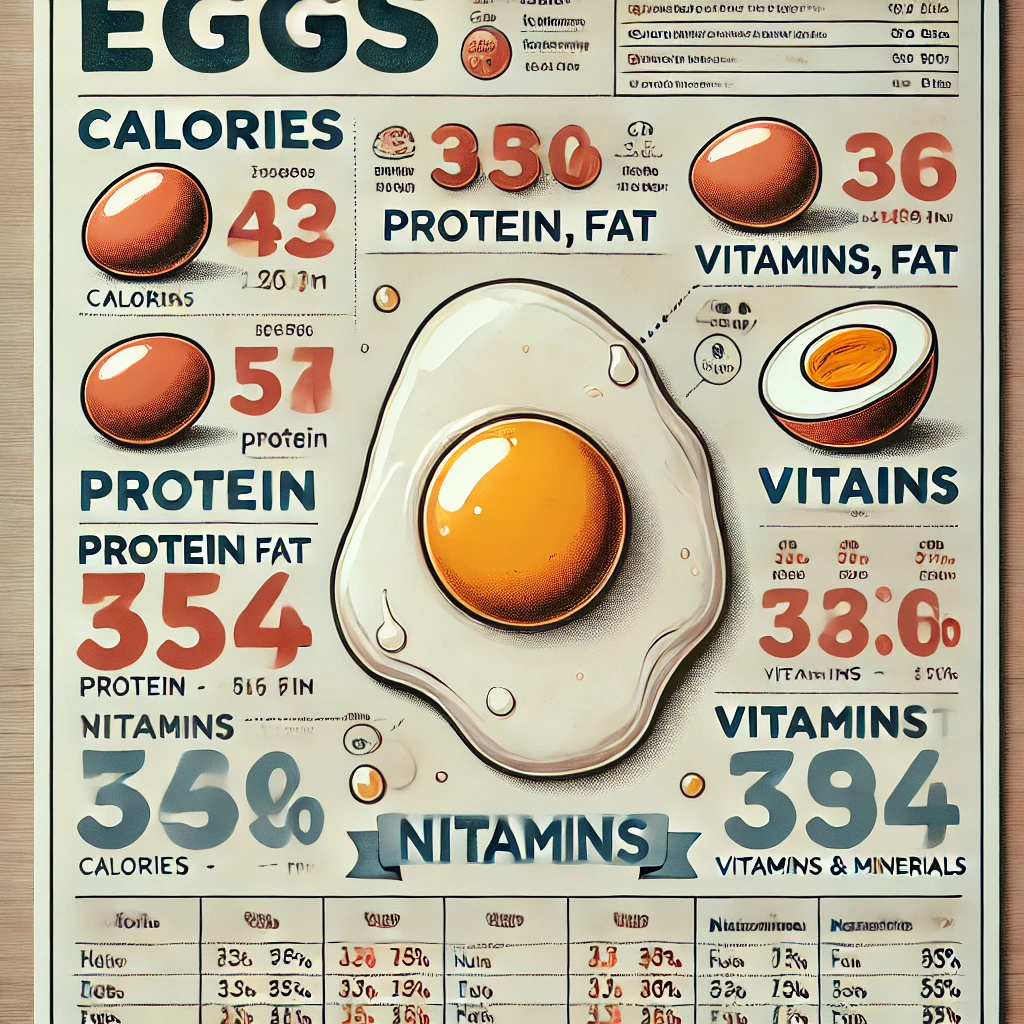Many households consider eggs a staple breakfast food, and with good reason. Eggs are versatile, healthy, and simple to prepare. Over easy eggs have a unique place among the many ways of preparing eggs. This article will help you if you have ever wondered how to prepare the perfect over-easy egg, or if you are curious as to what makes it different from other styles.
Introduction to Over Easy Eggs

The world loves eggs. Eggs can be cooked in many different ways. They are a popular food for breakfast, dinner, and lunch. Over easy eggs are a special style of cooking. Not only are they delicious, but they also have a wonderful texture blend. Learn how to cook the perfect over-easy egg.
What are Over Easy Eggs (Over Easy Eggs)?

Over Easy Eggs is a type fried eggs cooked on both sides. The whites are cooked but the yolk is still runny. The term “over-easy” is used to describe the gentle flipping the egg over to cook the other half without breaking the yolk. This method creates the perfect balance between the creamy white and slightly crisp yolk.
Precision in timing and careful handling are key to cooking over-easy eggs. It is important to have a fully set yolk and whites. This method of cooking is different from other styles of fried eggs, which each offer a unique culinary experience.
What is the difference between Over Easy, Medium and Hard?

It is important to master breakfast cooking by understanding the differences between different egg styles.
- Over-Easy Eggs : The whites and yolk are both fully cooked. To cook the egg on both sides, flip it gently.
- Over medium eggs The yolk is slightly thickened, but still somewhat liquid. The whites have been fully cooked.
- Hard Eggs Both the whites and yolks are fully cooked. The yolk should be firm and not at all runny.
The variations are based on the desired degree of doneness for the yolk and the time it takes to cook. Over-easy eggs are ideal for people who like to dip toast in the yolk. Meanwhile, over-hard eggs are for those who want a fully cooked yolk.
Ingredients Required

You’ll need the following ingredients to make perfect over-easy eggs:
- Fresh eggs (preferably organic).
- Butter or oil for frying
- Salt and pepper to taste
The flavor and texture can be improved by using high-quality ingredients. Fresh eggs are ideal for frying because they have whites that are firmer and yolks that are brighter.
Essential Tools and Equipment

The right cooking tools can make all the difference.
- Non-stick skillets or frying pans
- The spatula should be non-stick or silicone.
- A bowl for cracking eggs
The eggs will cook evenly, and they’ll flip over easily. The silicone spatula will flip the eggs without damaging the yolk.
How to Make Over Easy Eggs: A Step-by-Step Guide

- Heat the Pan Place your skillet on medium heat, and add a little butter or oil. Let the butter melt and spread it evenly over the pan.
- Crack Eggs: Crack eggs into a small bowl so that no shells fall into the pan. It also makes it easier to add the eggs gently to the pan.
- Cooking the Whites Pour the eggs in the skillet. Cook the eggs until the whites have mostly set, but the yolks remain runny. It usually takes around 2-3 minutes.
- Flip Gently : Carefully flip the eggs using a spatula. Cook the eggs for 20-30 additional seconds. The whites should be completely set while the yolks are still runny.
- Serve immediately: Transfer to a plate the eggs and season them with salt and black pepper. For the best texture, serve them immediately.
The trickiest part is flipping the eggs. Flipping the eggs smoothly and quickly is the key to avoiding breaking the yolk. Don’t get discouraged if you have to try a few times before getting it right.
Common mistakes to avoid

Cooking eggs over easy may seem like a simple task, but there are several mistakes that can ruin your efforts.
- Too high heat High temperatures can cause the egg yolk to be too liquid or even break. For a controlled cooking, medium heat is best.
- Improper flipping: Flipping the egg too early or late can cause the yolk to break or the egg to be overcooked. Before flipping, the whites must be almost set.
- Do not Use Fresh Eggs Fresher eggs are easier to flip and hold their shape. Older eggs can spread out more and be difficult to handle.
By avoiding these mistakes, you can improve the quality of over-easy eggs. The key to achieving the best result is cooking at the correct temperature and using freshly-caught eggs.
How to make perfect over easy eggs

- Use fresh eggs: Fresh egg whites are firmer, which makes them easier to flip and cook. The yolks will also be more flavorful and vibrant.
- Heat the Pan Ensure that your pan has been heated to the right temperature before adding the eggs. This will help cook the egg whites quickly and evenly.
- Gently Flip: Avoid breaking the yolk by being gentle while flipping. This task is best performed with a wide, thin spatula.
You can find the best method to make over-easy eggs by experimenting with different techniques. Adjust as necessary to fit your kitchen set-up.
Over Easy Eggs: Health Benefits

The nutrients in over-easy eggs are also delicious. These eggs are rich in vitamins, minerals, and protein. Runny yolks are healthier than fully cooked yolks because they retain more nutrients.
The eggs contain important nutrients such as vitamin B12 and riboflavin. Eggs are one of the best natural sources of vitamin B12, riboflavin, and selenium.
Serving Suggestions

Enjoying over easy eggs in different ways is possible:
- on Toast: Serve with a slice buttered toast and over-easy eggs for a classic brunch. The yolk soaks up the butter and bread to create a delicious combination.
- Avocado: Serve with avocado slices for a healthy and filling lunch. The avocado’s creamy texture complements the yolk perfectly.
- As an Egg Topping Use over-easy eggs as a topper for burgers or salads. They give any dish a touch of luxury.
Over Easy Eggs – Variations

Experiment with different flavors or ingredients to add some variety to your eggs over-easy.
- Cheddar: Sprinkle a piece of cheese over the top to create a melting delight. It’s best to use Cheddar, Swiss or Gouda.
- Herbs Sprinkle fresh herbs such as chives or parsley to add flavor. These herbs add a touch of freshness and aroma to the eggs.
- Spices Try seasoning your food with paprika or cayenne pepper. These spices give a little heat and complexity.
Over Easy Eggs in Different Cuisines

Around the world, over-easy eggs are popular and featured in many cuisines. They’re often served in American breakfasts with toast and bacon. They are often served in Mexican cuisine as part of a wholesome huevos rancheros. In Asian food, they are often served on top of rice bowls and noodles.
Different cultures use over-easy eggs in different ways. These variations may inspire you to experiment with new flavors and recipes.
The cultural significance of eggs

In many cultures, eggs have important cultural and symbolism. They are associated with life, fertility, and renewal. In many cultures, the eggs are part of rituals and celebrations.
As an example, during Easter eggs are decorated and given away as symbols of rebirth. Red eggs are often given as gifts during Chinese celebrations, to represent good fortune and happiness.
History and Mythology of Eggs

The history of eggs is rich and they appear in many myths and stories. The egg was considered a symbol for creation in ancient Egyptian mythology. The egg was thought to be the origin of the sun and universe.
The egg is associated with Orphic mythology in Greek mythology. In this tradition, the primordial egg gives birth to the gods. In many folktales, eggs are used to symbolize new beginnings and limitless possibilities.
Details of Cooking Techniques

The art of making the perfect over-easy egg is a skill. You can master this skill by following these detailed techniques:
- Different Fats Butter, olive and ghee all impart different flavors and textures. Butter gives eggs a rich flavor, olive oil has a fruity flavor, and ghee is nutty.
- Controlling the Heat: Begin with a medium heat and cook the whites slowly. Reduce the heat if the edges are cooking too quickly to prevent overcooking of the whites and keep the yolk runny.
- Flipping techniques Use a quick motion of the wrist to flip eggs. To get the right motion, practice flipping the eggs in a pan without any eggs. Use a spatula instead to gently flip the eggs.
Nutritional Information

The nutritional power of eggs is unmatched. This is a breakdown of all the nutrients found in a large yolk:
- Calories: 70
- Protein: 6 grams
- Fat : 5 grams
- Saturated fat: 1,5 grams
- Cholesterol : 185 milligrams
- Vitamin-A: 6 % of the Daily Value (DV).
- Vitamin-D: 10% DV
- Vitamin A: 10% of DV
- Riboflavin (B2): 15% of DV
- Selenium : 22% of DV
The antioxidants lutein, and zeaxanthin found in eggs are beneficial for eye health. Eggs are a healthy and satisfying food because they contain a balance of proteins and healthy fats.
History Anecdotes

In human history, eggs have played an important role. Here are some interesting anecdotes.
- Ancient Egypt The Egyptians believed the primordial egg to be the source of all creation and the sun. In their art and hieroglyphs, they often depicted the egg.
- Renaissance Europe During Renaissance Europe, eggs were a symbol for resurrection and eternal living. In art, they were used to represent purity and new beginnings.
- Colonial America Eggs were an important part of the diets early American settlers. Pickling or storing them in limewater was a common way to preserve eggs for a year’s supply.
Scientific Explanation

The science behind cooking eggs is fascinating. When heated, proteins in egg whites and yolks denature, coagulate and transform from a liquid state to a solid. The temperature, the cooking time and other ingredients can influence this process.
- Denaturation of Protein: Heat makes the egg whites unfold, causing the proteins to bond and form a network. This solidifies into a solid. Because the yolk is richer in fats it sets at a high temperature. This is why over-easy eggs remain runny.
- Maillard Reaction : The slight browning in the egg whites when frying them is due to a reaction between amino acids, sugars and reducing agents that increases flavor.
Testimonials or Personal Stories

Chefs and home cooks alike have unique stories and tips to share about making over-easy eggs. Here are some testimonials.
- Maria Lopez “Over-easy eggs are my favorite breakfast. Clarified butter is my go-to for cooking. It has a flavor that is unparalleled, and helps to achieve the perfect golden edge.”
- Home Chef John Smith : “I had a hard time flipping the eggs before I used a non-stick pan with a silicone spatula. Now I can flip the eggs perfectly without breaking the yolk.
- Food blogger Emily Davis says: “I like adding a bit of smoked pepper to my eggs over-easy.” It gives the yolk a creamy, smoky taste.
Recipe Variations

You can enhance your dishes by adding over-easy eggs to different dishes. Here are some recipes with detailed instructions:
Shakshuka and Over Easy Eggs
Ingredients:
- Olive oil 1 tablespoon
- 1 onion, finely sliced
- 1 bell pepper, sliced
- 2 cloves garlic, minced
- Crushed tomatoes in a 28-ounce can
- Cumin ground to 1 teaspoon
- 1 tablespoon paprika
- Taste salt and pepper
- 4 large eggs
- Fresh parsley chopped (for garnish).
Instructions:
- Over medium heat, heat olive oil in a large pan. Add bell pepper and onion, and cook until softened.
- Continue to cook the garlic for a further minute.
- Add crushed tomatoes, cumin and paprika. Season with salt and pepper. Stir for 10 to 15 minutes, until sauce is thickened.
- Crack an egg in each of the four wells.
- Cover the skillet with a lid and cook the eggs until the whites have set, but the yolks remain runny.
- Serve with a crusty bread and garnish with fresh parsley.
Egg-Topped Avocado Toast
Ingredients:
- Toast 2 slices of whole grain bread
- 1 avocado, mashed
- Taste salt and pepper
- 2 large eggs
- Butter or oil 1 teaspoon
- Red pepper flakes
Instructions:
- Spread avocado mashed on toast bread. Add salt and pepper.
- In a skillet, heat butter or oil over medium-high heat. Crack the eggs in the skillet.
- Then gently flip the eggs over and cook them for another 20-30 seconds.
- Top the avocado toast with the eggs. If desired, sprinkle with red pepper flake.
Breakfast Grain Bowl With Over Easy Eggs
Ingredients:
- 1 cup cooked brown rice or quinoa
- 1 cup sauteed spinach
- 1/2 cup roasted sweet potatoes
- 1/4 cup crumbled Feta cheese
- 2 large eggs
- Olive oil 1 tablespoon
- Taste salt and pepper
Instructions:
- Layer quinoa, brown rice, sauteed sweet potatoes and feta on top of the grain bowl.
- Over medium heat, heat olive oil in a pan. Crack the eggs in the pan.
- Then gently flip the eggs over and cook them for another 20-30 seconds.
- Sprinkle salt and pepper on the grains. Add salt and pepper.
Comparative Analysis

Compare over-easy eggs to other breakfast foods and you can understand their benefits.
- Taste : Over-easy eggs are characterized by a creamy white and a slightly crisp yolk, creating a pleasing texture contrast. The runny yolk gives them a more rich flavor than scrambled or omelets.
- Nutritional value Over-easy eggs retain more nutrition in the yolk than fully cooked eggs. These eggs are lower in fat and calories than bacon, so they’re a healthier alternative.
- Preparation time Over-easy eggs can be prepared in a matter of minutes. They are a great choice for busy mornings, compared to other dishes such as waffles and pancakes.
The conclusion of the article is:

Over-easy eggs add a delicious touch to any meal. They offer a balance of textures and flavors. This guide will help you master the art and taste of over-easy eggs. These tips and tricks are perfect for any cook, whether you’re a beginner or an experienced chef. Enjoy your over-easy eggs with confidence and creativity
FAQs

What is the best pan for cooking over-easy eggs?
The best skillet for over-easy eggs is a non-stick pan. This prevents eggs from sticking to the pan and makes flipping them easier. If they’re well-seasoned, cast iron pans will also work.
How can I flip an egg without breaking the yolk?
Flip the egg with a wide, thin spatula. Before flipping the egg, make sure that the whites have mostly hardened. You can achieve the perfect flip by practicing the flipping technique.
Is it safe to eat over-easy eggs?
Over easy eggs can be eaten as long as the yolks are fully set. To avoid foodborne illnesses, make sure the whites have fully set. Fresh, high-quality egg reduces contamination risk.
How can I cook over easy eggs without using butter or oil
You can cook eggs in a non-stick skillet without using butter or oil. However, they may not taste the same. You can add a small amount of water to the pan to prevent it from sticking.
When do the eggs need to be flipped?
When the whites of the eggs are almost set, but the yolks still runny, it is time to flip the eggs. It usually takes 2-3 minutes at medium heat. The white edges should be opaque and the yolk still shiny.